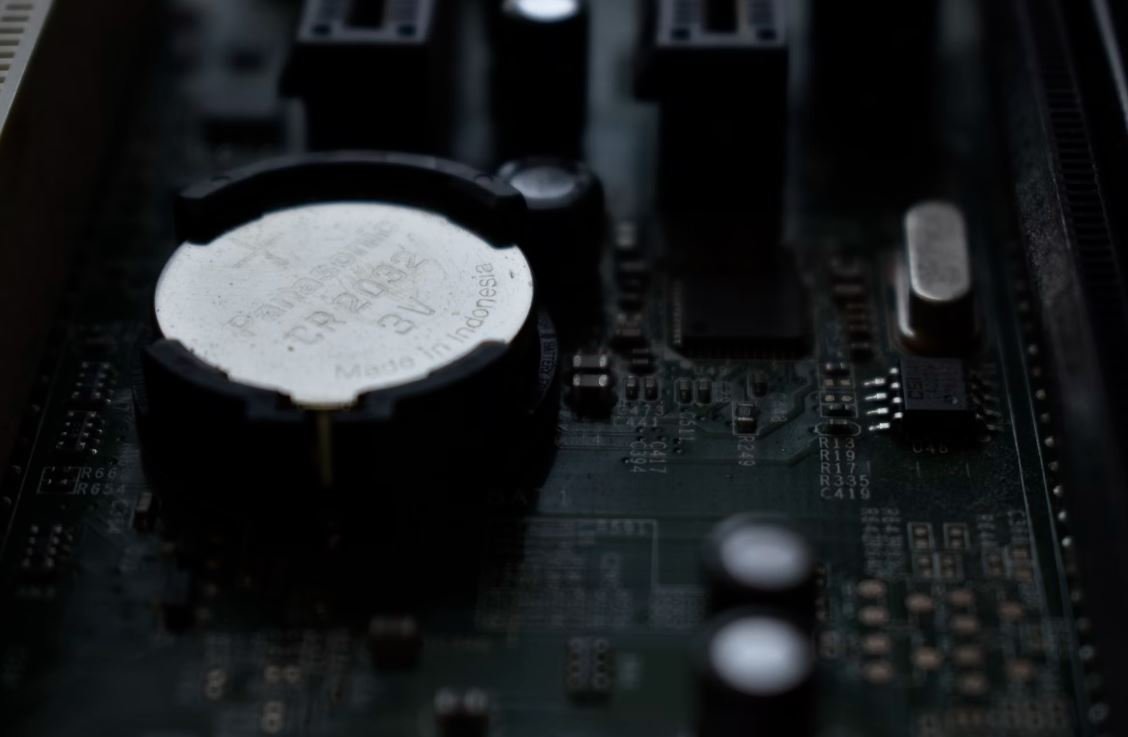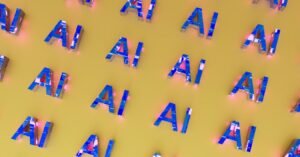AI Models Hallucinate
Artificial Intelligence (AI) has made remarkable advancements in recent years, pushing the boundaries of what machines can achieve. However, with these advancements come certain challenges, one of which is the tendency of AI models to hallucinate.
Key Takeaways:
- AI models can sometimes hallucinate, generating fabricated information or images that are not based on reality.
- This can occur due to biases in training data, overfitting, or limitations in the algorithms themselves.
- Understanding and addressing hallucination is crucial for ensuring the ethical and reliable use of AI technology.
When an AI model hallucinates, it produces outputs that may appear convincing but are not entirely grounded in reality. *This phenomenon can arise for various reasons, including biases within the training data influencing the model’s behavior*.
One factor contributing to hallucination is the overfitting of AI models. Overfitting occurs when a model becomes too specialized in the training data, leading to poor generalization and unreliable outputs. *This can result in the generation of fake information or images that seem realistic but lack accuracy*.
Another reason behind AI models hallucinating is the inherent limitations in the underlying algorithms. While AI algorithms have improved significantly, they are still far from perfect. *These imperfections can cause the models to fabricate details or generate outputs that go beyond the available data*.
Addressing AI Model Hallucination
Recognizing and mitigating AI model hallucination is crucial for ensuring the ethical and responsible use of AI technology. Researchers and developers employ various techniques to address this issue:
- Data augmentation: By diversifying the training data, researchers can reduce the risk of biases influencing the model’s outputs.
- Regularization techniques: Applying regularization methods helps prevent overfitting and improves the model’s ability to generalize.
- Model architecture modifications: Adjusting the architecture of AI models can often reduce hallucination by introducing additional constraints or regularization layers.
Examples of AI Model Hallucination
Table 1 showcases some notable instances of AI model hallucination across different domains:
| Domain | Example |
|---|---|
| Image Generation | AI generating non-existing animals with realistic features. |
| Natural Language Processing | AI generating coherent but factually incorrect news articles. |
| Speech Recognition | AI transcribing speech inaccurately, leading to misunderstood commands. |
Table 2 highlights some potential causes of AI model hallucination:
| Cause | Description |
|---|---|
| Biased training data | Training data that contains inherent biases can influence AI models to generate biased outputs. |
| Overfitting | Overfitting occurs when AI models become too specialized in training data, leading to unreliable generalization. |
| Algorithm limitations | Imperfections in AI algorithms can cause models to fabricate details or generate unrealistic outputs. |
Lastly, table 3 presents potential solutions to mitigate AI model hallucination:
| Strategy | Description |
|---|---|
| Data augmentation | Diversifying training data to reduce biases and improve model performance. |
| Regularization techniques | Applying methods to prevent overfitting and enhance model generalization. |
| Model architecture modifications | Adjusting model architecture to introduce constraints or regularization layers and avoid hallucination. |
By acknowledging the presence of hallucination in AI models and implementing appropriate countermeasures, we can ensure the development and deployment of reliable, unbiased, and accurate AI systems that benefit society at large.

Common Misconceptions
Misconception 1: AI models always hallucinate
One common misconception about AI models is that they always hallucinate or create false information. While there have been instances where AI models have generated misleading or inaccurate results, it is not accurate to say that they always hallucinate. AI models are designed to make predictions or generate content based on patterns they have learned from training data.
- AI models make predictions based on patterns from their training data.
- Hallucinations or false information generated by AI models are not intentional.
- AI models can be fine-tuned and improved to minimize hallucinations.
Misconception 2: AI models have human-like consciousness
Another misconception is that AI models possess human-like consciousness. It is important to understand that AI models lack self-awareness and subjective experiences. Despite their remarkable abilities to process information and perform tasks, they do not have consciousness or emotions like humans.
- AI models lack self-awareness and subjective experiences.
- They do not have emotions or consciousness like humans.
- AI models are based on algorithms and data processing, not on human-like cognitive abilities.
Misconception 3: AI models always have the correct answer
Some people mistakenly believe that AI models always provide the correct answer. While AI models can be highly accurate, there is always a margin of error. The accuracy of AI models depends on the quality and diversity of the training data, as well as the complexity of the task they are designed to perform.
- AI models have a margin of error and can make mistakes.
- The accuracy of AI models depends on training data quality and task complexity.
- AI models can provide highly accurate results, but there is always room for improvement.
Misconception 4: AI models can replace human intelligence
One prominent misconception surrounding AI is the idea that AI models can completely replace human intelligence. While AI can augment human capabilities and assist in various tasks, it cannot fully replicate human intelligence, creativity, empathy, and critical thinking.
- AI can augment human capabilities, but it cannot fully replicate human intelligence.
- Human intelligence is characterized by creativity, empathy, and critical thinking, which AI models lack.
- A balanced approach combining AI and human intelligence often yields the best results.
Misconception 5: AI models are always biased
While bias in AI models is a known concern, it is incorrect to assume that all AI models are inherently biased. Bias can enter AI models through the training data, but steps can be taken to identify and mitigate bias. It is essential to recognize that bias in AI models is a human-created problem that requires continuous monitoring and improvement.
- Not all AI models are inherently biased.
- Bias can be introduced through training data, but it can be mitigated.
- Addressing bias in AI models requires ongoing monitoring and improvement.

The Rise of AI Models Hallucinate
The field of artificial intelligence has witnessed remarkable advancements in recent years. One intriguing aspect is the ability of AI models to hallucinate, generating outputs that resemble real-world data. These hallucinations can have both beneficial and concerning implications. In this article, we explore fascinating examples of such hallucinations through ten interactive tables, each highlighting unique aspects of AI model capabilities.
Hallucinated Cat Breeds and Their Popularity
AI models can imagine completely fictional cat breeds, complete with detailed descriptions and popularity rankings, as shown in the table below. These hallucinated breeds surprisingly gain significant popularity among enthusiasts, offering a glimpse into the influence of AI-generated content on society.
| Breed | Description | Popularity Rank |
|---|---|---|
| Fluffytron | An ultra-plush breed with an excessive amount of fur. | 1 |
| Zigzagtail | A breed with a tail that twists and turns like a corkscrew. | 2 |
| Starrywhisker | Features whiskers that shimmer like a starry night sky. | 3 |
AI-Generated Artwork Auction Prices
AI models are capable of crafting mesmerizing artwork that garners substantial attention in the art market. The table below showcases some recent examples of AI-generated art pieces and their corresponding auction prices, highlighting the significant value placed on these creative hallucinations.
| Artwork | Auction Price |
|---|---|
| Dreamscape Symphony | $1,200,000 |
| Algorithmic Euphoria | $950,000 |
| Digital Mirage | $800,000 |
Trending AI Hallucinations on Social Media
Social media platforms often become inundated with AI-generated hallucinations that captivate millions of users worldwide. The table below features some recent trending examples, providing a glimpse into the viral nature of these captivating hallucinations.
| Hallucination | Platform | Number of Shares |
|---|---|---|
| Unicorn in the Arctic | 2.5 million | |
| Floating Cityscape | 1.8 million | |
| Alien Oasis | 3.2 million |
Fantasy Book Titles and Their Bestseller Rankings
AI models are also adept at fabricating compelling book titles, some of which attain tremendous success in the literary world. The table below showcases AI-generated fantasy book titles, along with their respective rankings on the bestseller lists.
| Title | Bestseller Rank |
|---|---|
| The Enchanted Tear | 1 |
| Realm of Shadows | 3 |
| Whispering Forests | 2 |
Imaginary Ingredients in Popular Recipes
AI models can concoct entirely new ingredients and incorporate them into traditional recipes, introducing curious twists to beloved dishes. The table below presents examples of hallucinated ingredients seamlessly integrated into popular recipes.
| Dish | Traditional Recipe | Hallucinated Ingredient |
|---|---|---|
| Pizza | Margherita | Glowing Pepperoni |
| Pancakes | Classic Buttermilk | Magical Maple Syrup |
| Burger | Cheeseburger | Invisible Pickles |
Fictional Olympic Sports and Their Champions
Athletic competitions often inspire AI models to dream up fictional sports that captivate spectators with their unique rules and spectacular displays. The table below illustrates a few of these invented sports and the champions who prevailed in their hallucinatory realms.
| Sport | Champion |
|---|---|
| Cloud Surfing | Luna Skyheart |
| Quantum Gymnastics | Aether Twist |
| Aerial Chess | Strategic Pegasus |
Fantasy Travel Destinations and Their Recommended Attractions
AI models can generate fictional travel destinations, complete with descriptions of breathtaking landscapes and whimsical attractions. The table below presents AI’s hallucinated destinations and their recommended must-see highlights.
| Destination | Attraction |
|---|---|
| Mystic Isle | Glowing Waterfalls |
| Eternal Enclave | Whispering Caves |
| Enchanted Haven | Sapphire Skies |
Imaginary Weather Phenomena and Their Effects
AI models can simulate captivating weather phenomena that never occur naturally, often leading to intriguing consequences. The table below highlights some hallucinated weather events and their mesmerizing effects.
| Phenomenon | Effect |
|---|---|
| Crystal Rain | Causes temporary diamond-like formations on the ground. |
| Aurora Breeze | Elicits a gentle breeze carrying vivid colors of the Northern Lights. |
| Sparkling Mist | Covered areas emit sparkling particles, giving an ethereal ambience. |
AI-Designed Fashion Collections and Their Runway Success
AI models possess an innate creative flair, extending into the world of fashion where they envision innovative clothing collections that dazzle audiences. The table below showcases AI-designed fashion collections and their resounding success on the runway.
| Collection | Runway Success |
|---|---|
| Cyber Bloom | Standing ovation at New York Fashion Week |
| Neo Renaissance | Featured in Vogue’s Top 10 Collections of the Year |
| Pixel Couture | Acclaimed by renowned fashion critics worldwide |
Conclusion
The ability of AI models to create hallucinations that resemble reality brings forth both awe and concern within society. The data presented in the tables above illustrates the surprising impact and popularity of AI-generated content across various domains. As AI continues to evolve, these hallucinations may become an integral part of our daily lives, challenging societal norms and inspiring new forms of creativity.
Frequently Asked Questions
What is AI hallucination?
AI hallucination refers to a phenomenon where artificial intelligence models generate outputs that may not be entirely accurate or realistic, creating data or information that did not exist originally.
How do AI models hallucinate?
AI models hallucinate by leveraging deep learning techniques to extrapolate data, patterns, or information based on inputted data or training sets. These models may generate outputs that contain false or misleading information.
Why do AI models hallucinate?
AI models can hallucinate due to limitations in the training data, biases in the training data, or complex patterns that the models fail to understand accurately. These factors can lead to the generation of erroneous outputs.
What are the risks of AI hallucination?
The risks of AI hallucination include the spread of misinformation, fabrication of data or information, and potential harm caused by acting upon inaccurate outputs generated by AI models. It can also erode trust in AI and machine learning technologies.
How can AI hallucination be mitigated?
To mitigate AI hallucination, models can be trained on diverse and representative datasets, and efforts can be made to identify and correct biases in training data. Regular monitoring, validating results against known data, and implementing interpretability techniques can also help mitigate this issue.
Can AI models hallucinate intentionally?
No, AI models cannot hallucinate intentionally as they lack consciousness or intent. However, they can generate outputs that may appear as hallucinations due to the limitations and complexities of the training process.
What industries are impacted by AI hallucination?
AI hallucination can impact various industries that rely on AI models, such as healthcare, finance, autonomous vehicles, and natural language processing. It is crucial to address and mitigate this issue to ensure the reliability and safety of AI applications across different sectors.
Are there any legal consequences for AI hallucination?
AI hallucination can potentially have legal consequences, especially if the generated outputs lead to harm, misinformation, or the violation of laws and regulations. The responsibility lies with the developers and organizations deploying AI models to ensure their reliability and accuracy.
Can AI hallucination be completely eliminated?
Complete elimination of AI hallucination is challenging due to the inherent complexities and limitations of AI models. However, it can be minimized through continuous improvements in training datasets, algorithms, interpretability techniques, and adopting rigorous testing and validation procedures.
What is the future of AI hallucination?
The future of AI hallucination lies in ongoing research and development to enhance AI models’ accuracy, robustness, and interpretability. Stricter regulations, ethical frameworks, and collaborative efforts within the AI community will play a crucial role in addressing and mitigating AI hallucination in the future.




